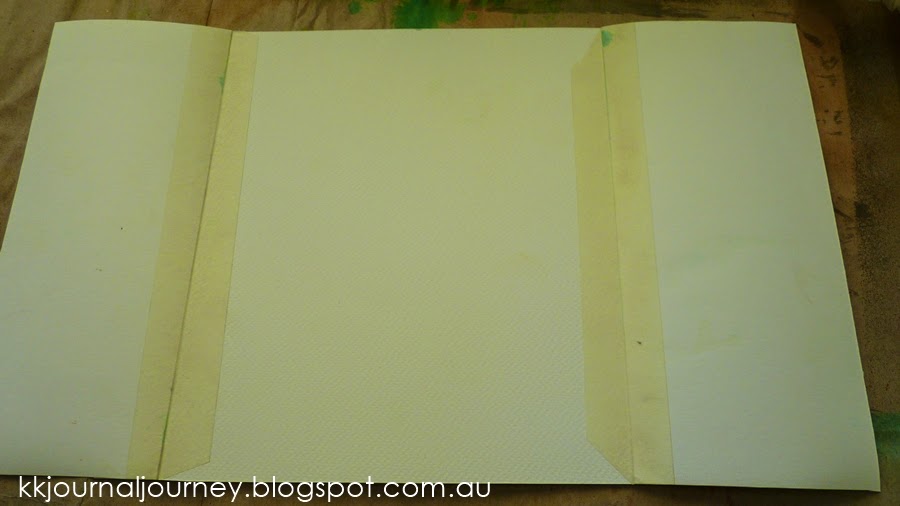The outside was created entirely with sprays. Home-made yellow, Dylusions in teal and jade and an orange Glimmermist:
After I sprayed the A4 piece of water colour paper, I trimmed it down and cut it in half and used masking tape to turn it into doors on a 10" square piece of watercolour paper:
I then sketched out my idea on the inside page and covered the entire inside with two thin coats of white gesso. I could still see my sketch, and the gesso really helped to seal the masking tape and keep the mediums I used on the inside from leaking through to the front:
After sketching the face in, I let the page form on its own. I knew that I was creating a nature-inspired piece, and the lady I drew represents Mother Nature, or an earth goddess. The outside is bright and summery, and the inside ended up being quite dark and moody (supposed to represent that Mother Nature isn't all sunshine and rainbows, just like life). I used acrylic paints for the inside art, then added texture paste over the top through two different nature-themed stencils:
Some pink and gold sprays over the butterflies completed the inside art, then I used spray inks to blend the white paper on the sides of the page in with the doors and added the wording.
The words are printed on plain white cardstock. This is how I usually add words to my journal pages; I have a drawer dedicated to pages of words and quotes that I have printed and word stickers. I almost always use the same font (it is called My Underwood). I used sprays to colour the word strips.
Remember that there are heaps of pictures on the Pinterest page to inspire ideas, and I love to see what you have created based on the JJ prompts and lessons.
If you have been blogging about your 2015 Journal Journey, please leave me a link in the comments section so I can check it out. You can also share in the Facebook Driver Reviver Group.









